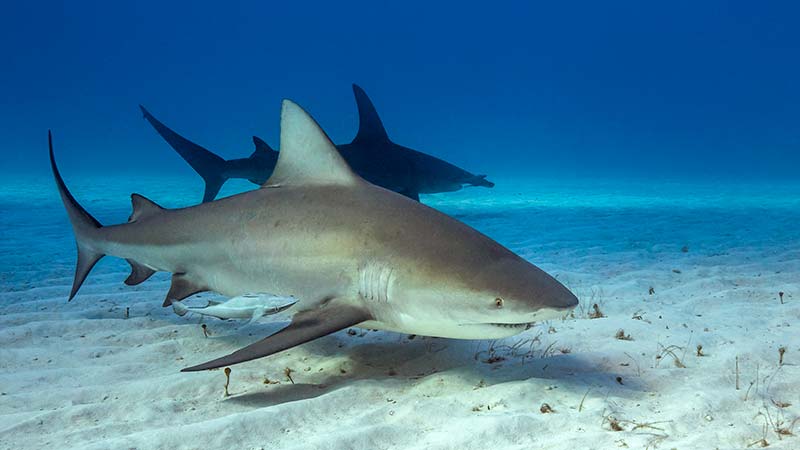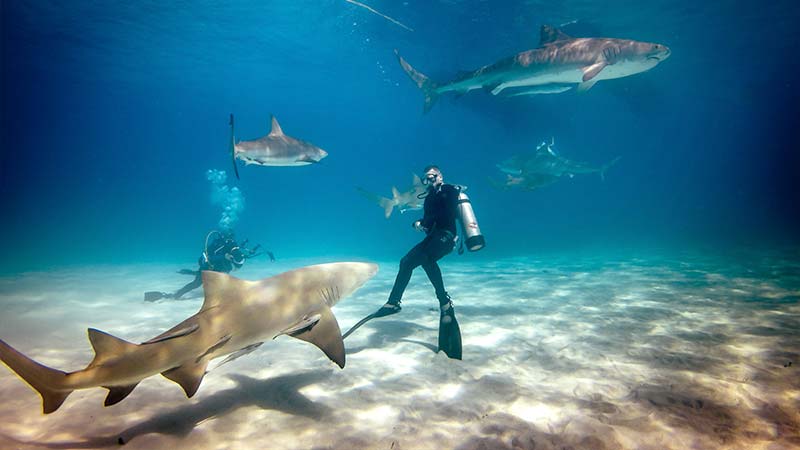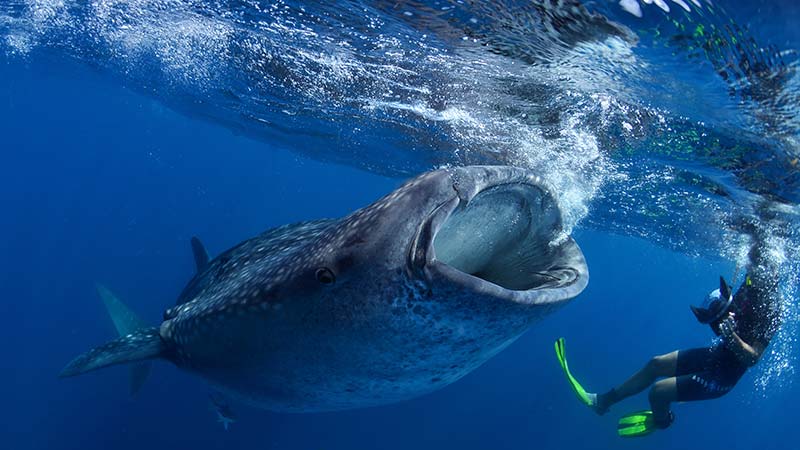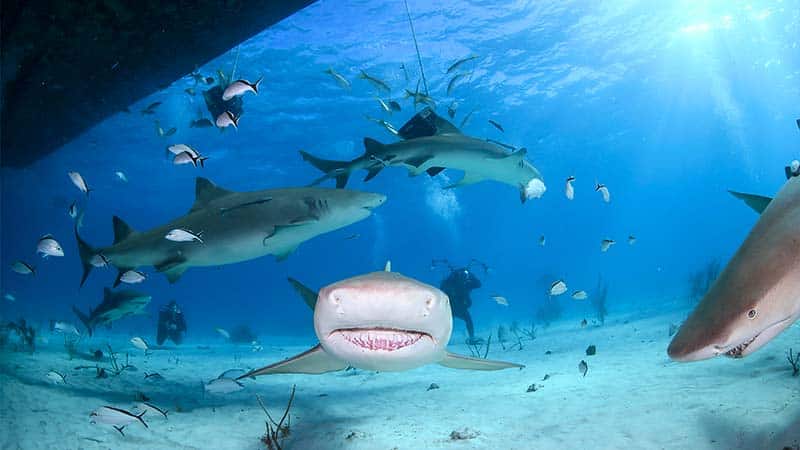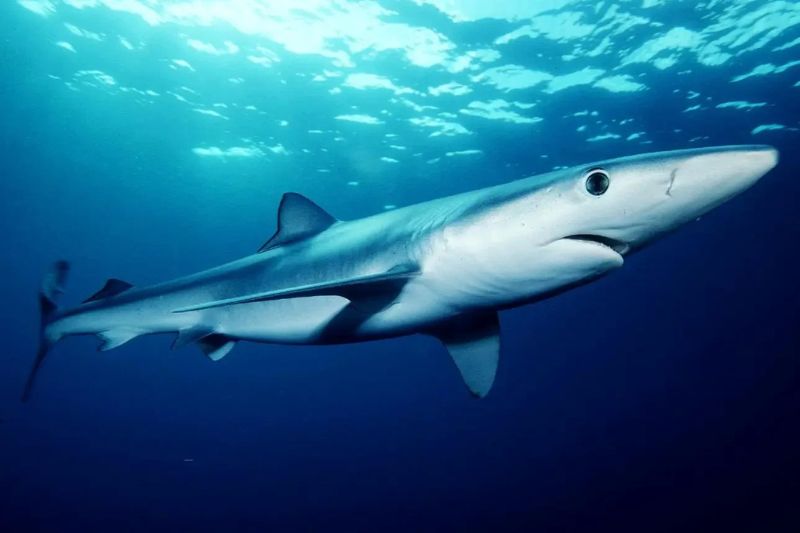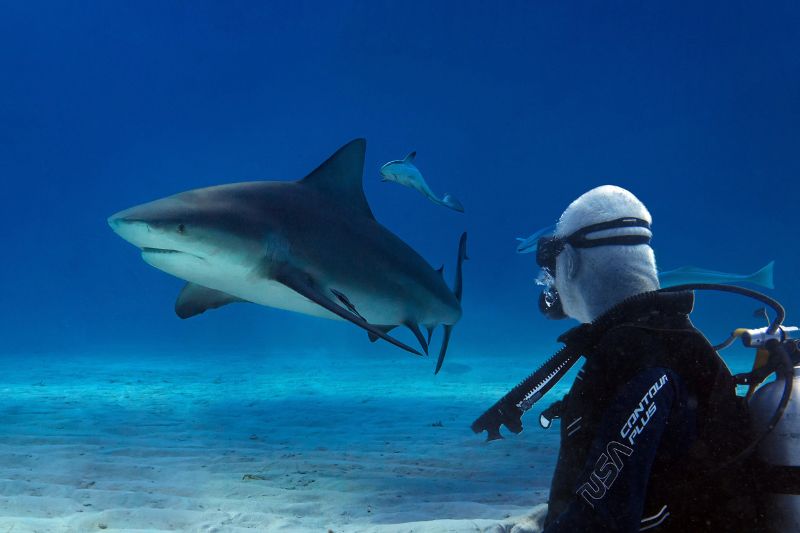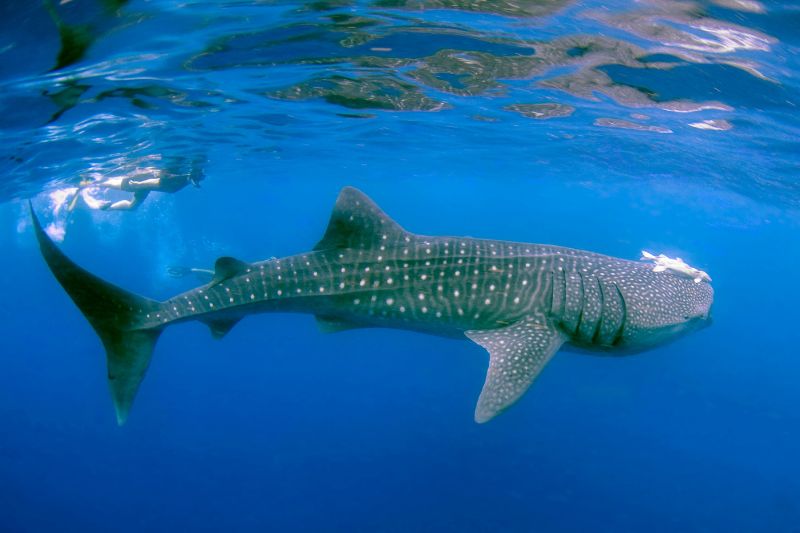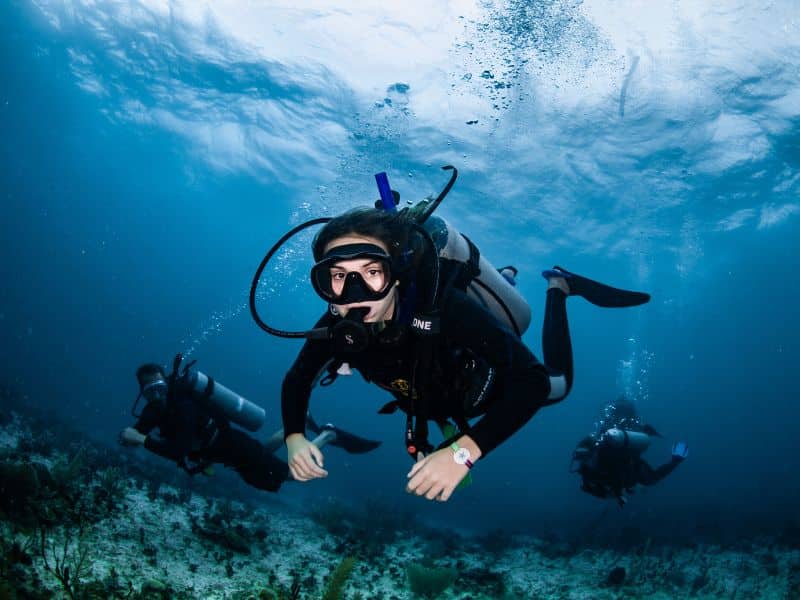5. Shark Species You Can Encounter While Shark Scuba Diving
Shark scuba diving puts you face-to-face with some of the most incredible creatures in the ocean. Each species has its own style, behavior, and magic. Get ready: this is pure adrenaline and beauty.
Caribbean Reef Shark
They patrol the Caribbean reefs with grace and curiosity.
Not looking for trouble, just exploring.
Perfect for those starting out in shark diving near me and wanting to admire sharks up close.
Bull Shark
Robust, powerful, and always impressive.
Very common in Playa del Carmen and other Caribbean areas.
Here, your experience of diving with sharks near me reaches a whole new level. Expert guides ensure everything is safe and smooth.
Tiger Shark
Famous for their stripes and imposing presence.
Found in tropical waters like Fiji and the Caribbean.
A show of strength and majesty for anyone seeking a shark diving tour full of excitement.
Hammerhead Shark
Impossible to forget with their hammer-shaped heads.
They gather in large schools, especially in the Galápagos and Maldives.
Seeing them is a highlight of any shark diving trip.
Whale Shark
The gentle giant of the ocean.
Filter feeders that swim calmly, perfect for snorkelers and divers alike.
In Mexico, the Maldives, and the Caribbean, every shark swim is all about peace, admiration, and awe.
Nurse Shark
Resting on sandy bottoms or reefs.
Docile and approachable, ideal for beginner divers.
A perfect first encounter for your shark scuba diving experience.
Grey Reef Shark
Pure elegance on Pacific and Red Sea reefs.
They patrol with style, showing off the beauty of tropical currents.
Accessible for divers of all levels, every shark watching near me is unforgettable.
Blacktip Reef Shark
Fast, agile, with black-tipped fins clearly visible.
They move through shallow reefs and lagoons.
Seen in the Maldives and Pacific, every swim with sharks near me is pure excitement.
Silky Shark
Sleek, curious, and quick.
Common in Fiji and tropical waters.
Perfect for those looking for an exciting shark dive without disturbing their natural behavior.
Lemon Shark
Yellowish in color and totally calm.
Common in the Caribbean and Florida, they usually patrol shallow coastal waters.
Every encounter is a lesson in nature and respect during your shark scuba diving tour.
Every shark you see is in its natural habitat. Every dive follows strict protocols.
The guides are there, the gear is ready. All you have to do is focus on the experience, admire, and let yourself be carried away by the thrill of being surrounded by sharks.
Summary
| Shark Species |
Typical Locations |
Behavior & Notes |
| Caribbean Reef Shark |
Caribbean Sea |
Curious, reef-associated |
| Bull Shark |
Caribbean, Playa del Carmen |
Powerful, can be assertive |
| Tiger Shark |
Fiji, Caribbean |
Distinctive stripes, diverse diet |
| Hammerhead Shark |
Galápagos, Maldives |
Schooling, unique head shape |
| Whale Shark |
Maldives, Mexico, Caribbean |
Gentle filter feeder, largest fish |
| Nurse Shark |
Caribbean, Belize |
Docile, bottom-dwelling |
| Grey Reef Shark |
Red Sea, Fiji |
Sleek, common on reef slopes |
| Blacktip Reef Shark |
Maldives, Pacific Islands |
Fast, shallow reefs |
| Silky Shark |
Fiji |
Curious, keeps distance |
| Lemon Shark |
Caribbean, Florida |
Calm, shallow coastal waters |




